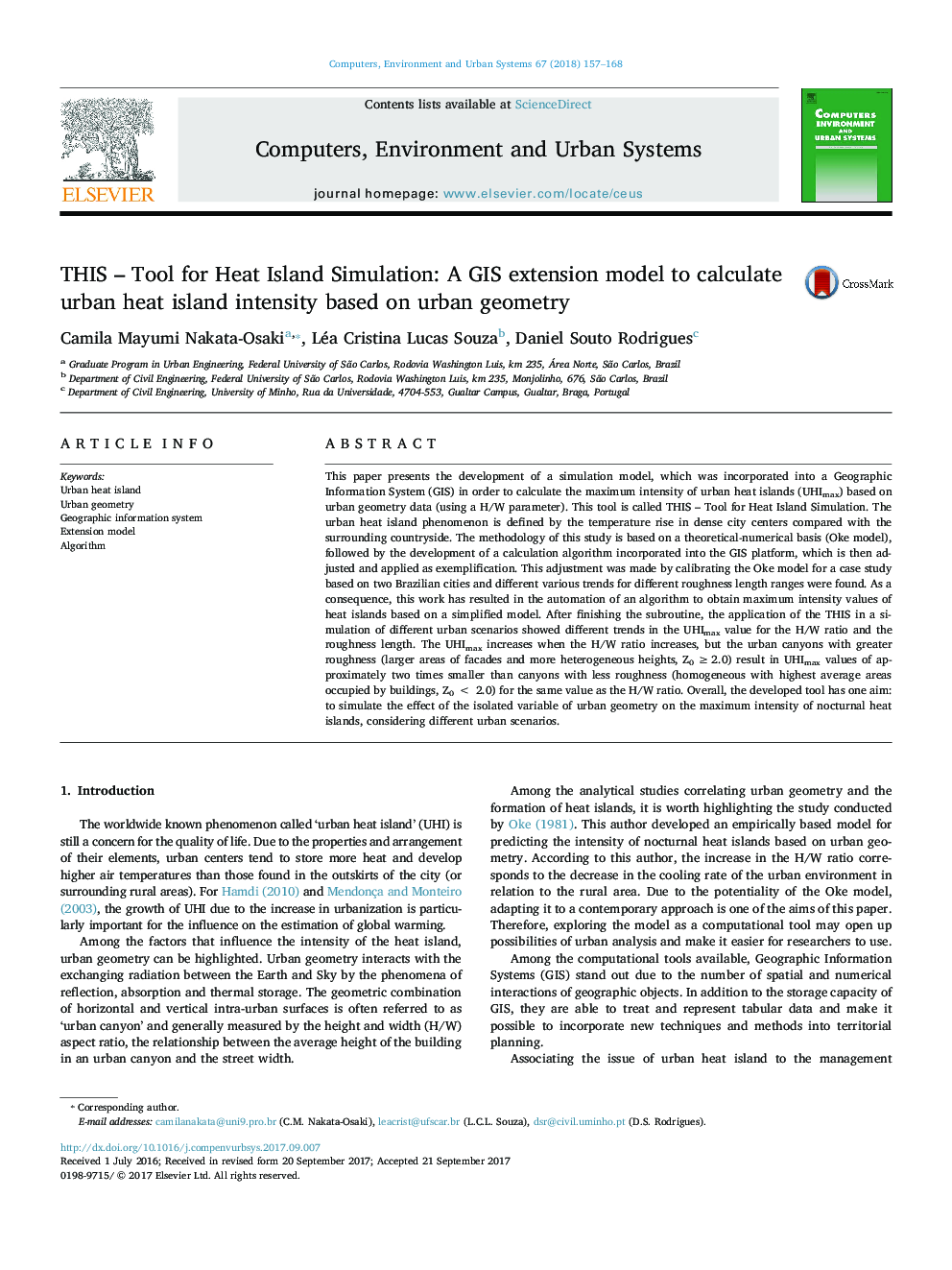| کد مقاله | کد نشریه | سال انتشار | مقاله انگلیسی | نسخه تمام متن |
|---|---|---|---|---|
| 4965114 | 1448223 | 2018 | 12 صفحه PDF | دانلود رایگان |
- THIS allows to verify the potential of urban geometry on influencing the development of urban heat islands.
- The increasing of the roughness attenuates the growth of the UHI with the increasing H/W ratio.
- THIS tool is an extension of a GIS to calculate the UHI intensity based on urban geometry.
- The simplified way of inputting data is an advantage in the THIS tool.
- THIS algorithm enables the user to insert new correction equations for new validations, when this is necessary.
This paper presents the development of a simulation model, which was incorporated into a Geographic Information System (GIS) in order to calculate the maximum intensity of urban heat islands (UHImax) based on urban geometry data (using a H/W parameter). This tool is called THIS - Tool for Heat Island Simulation. The urban heat island phenomenon is defined by the temperature rise in dense city centers compared with the surrounding countryside. The methodology of this study is based on a theoretical-numerical basis (Oke model), followed by the development of a calculation algorithm incorporated into the GIS platform, which is then adjusted and applied as exemplification. This adjustment was made by calibrating the Oke model for a case study based on two Brazilian cities and different various trends for different roughness length ranges were found. As a consequence, this work has resulted in the automation of an algorithm to obtain maximum intensity values of heat islands based on a simplified model. After finishing the subroutine, the application of the THIS in a simulation of different urban scenarios showed different trends in the UHImax value for the H/W ratio and the roughness length. The UHImax increases when the H/W ratio increases, but the urban canyons with greater roughness (larger areas of facades and more heterogeneous heights, Z0 â¥Â 2.0) result in UHImax values of approximately two times smaller than canyons with less roughness (homogeneous with highest average areas occupied by buildings, Z0 < 2.0) for the same value as the H/W ratio. Overall, the developed tool has one aim: to simulate the effect of the isolated variable of urban geometry on the maximum intensity of nocturnal heat islands, considering different urban scenarios.
Journal: Computers, Environment and Urban Systems - Volume 67, January 2018, Pages 157-168
